I am an avid bird lover. My brothers and I grew up breeding budgies, finches, cockatiels, quails, ringneck parrots, and canaries. We had a huge aviary in our backyard, and sold offspring for pocket money.
If I knew then what I know now about breeding birds, I would have done a lot differently.
On the whole, breeding birds is a fairly easy business. You need a good stock to breed, food, water, aviaries, shelter, and good hygiene.
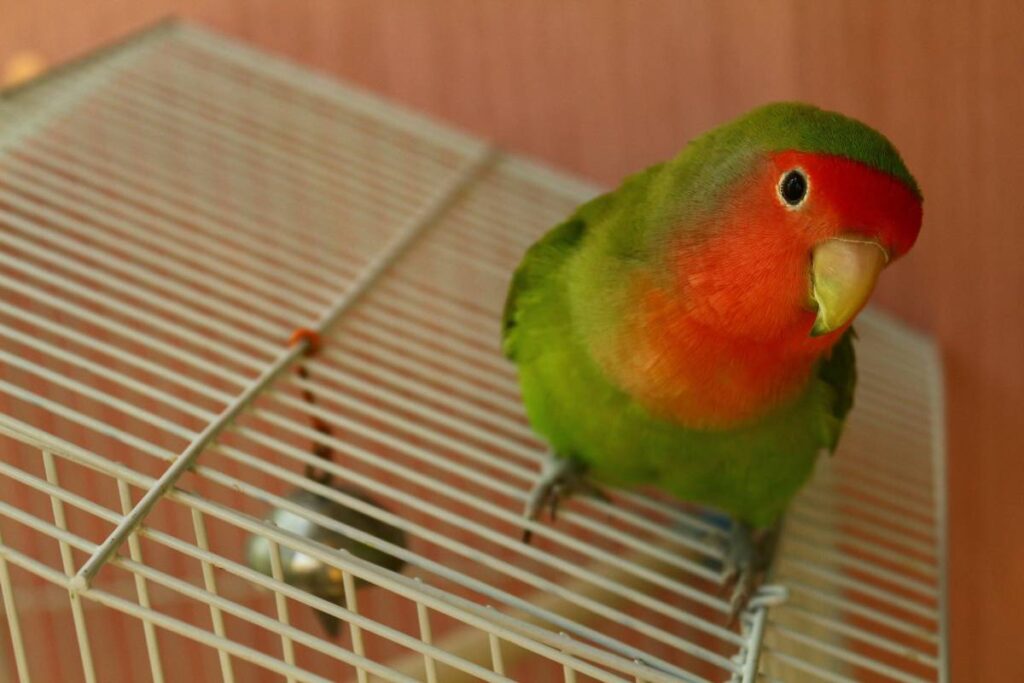
A little knowledge about the birds you want to breed with will also go a long way. I am going to help you understand 10 popular pet bird breeds so that you can be a better, more humane, more ethical and successful bird breeder.
I have added fun videos to help you choose the breed you wish to breed with and to learn a little about their interaction with people.
| Bird | Price / Bird | Daily Costs / Bird |
|---|---|---|
| Lovebirds | $40 – $250 | $0.63 / bird / day |
| Zebra Finch | $20 – $75 | $0.20 / bird / day |
| African Grey | $1,000 – $1,500 | $4 / bird / day |
| Budgie | $10 – $35 | $1.6 / bird / day |
| Quail | $1 – $5 | $0.04 – $0.09 / bird / day |
| Macaw | $1,000 – $5,000 | $4 / bird / day |
| Cockatiel | $80 – $250 | $0.26 – $0.33 / bird / day |
| Canary | $25 – $150 | $3.24 / bird / day |
| Parrotlets | $120 – $350 | $0.55 – $1.1 / bird / day |
| Green-Cheeked Consures | $250 – $500 | $1 / bird / day |
1. Lovebirds
I am going to start out with a contradiction. Lovebirds are considered to be one of the more quiet pet birds. In my experience, the person who decided that is 100% deaf!
Lovebirds are so pretty to look at, and they really behave like lovebirds. They are very social, and you will often find pairs kissing.
Lovebirds are small parrots that are super easy to breed with. Obviously, if you are breeding you need more than one bird. In general, these are very social birds.
If the owner is invested in a relationship, the birds can be delightful. But it is always better to have 2 for those long hours when you are at school or work.
Lovebirds mate for life. They are so intimate that they often die of loneliness when their mate dies.
Breeding pair cost:
Lovebirds, like all parrots, are priced according to whether they are hand raised – therefore tame – or parent fed – therefore in need of socialization with humans – and also the breed of lovebird.
- They can be bought from $40 to $250.
- Your breeding pair can cost $80 to $500.
Eggs are laid at a time and incubation period:
The females lay 4 to 6 eggs at a time. The incubation period is 21 days.
Time to raise a baby to selling age:
Hand-raised birds should only be handled by human hands after the first week at least. It is easy to begin hand-raising at 6 weeks old. The birds can be sold at 8 to 12 weeks.
Daily costs:
The cost for 2 birds is:
- $14 to $26 for a 2-pound bag of food
- $24 – $40 per month for toys, treats, and vet costs
This amounts to $0.63 per bird per day.
Area size requirements:
Because you have 2 lovebirds, your cage should be at least 24 by 24 by 24 inches or 30 by 18 by 18 inches, with a bar space of ⅜ or ½ an inch.
You should not have an odd number of birds in a cage if you are breeding. And you should always try to give your birds several hours out of their cage or have a larger flight cage.
Foods they can eat:
Lovebirds enjoy a mixed diet of fresh fruit, berries, seeds, pellets, leafy vegetables, corn, and even grass.
Foods they cannot eat:
It is not safe to give your bird the following:
- Avocado
- Chocolate
- Salt
- Caffeine
- Fat
- Onions
- Fruit pits or apple seeds
- Garlic
- Xylitol
Needed supplies:
- Large cage or aviary
- Food bowl
- Water bowl
- Nest
- Shavings or shredding paper for in the nest
- Toys
- Perches
- Climbing branches
- Rope toys
- Chain toys
- A cuttlebone
- Some toys to climb
- Bath
- Mirrors
- Vitamin supplement
- Seed bells
- Swings
- An outside of the cage play area indoors where they can interact with you
- Paper to line the base of the cage
- Paper for the birds to rip up
Selling price for the offspring
You can sell the offspring for $40 to $250 depending on breed and how tame the bird is, and whether or not they have been hand raised.
2. Zebra Finch
There are many different types of finches, and all are exquisite. The most popular finch to breed with is the zebra finch. They are a very hardy breed that is easy to breed with.
Never underestimate the value of smaller birds. These teeny-tiny, feathered friends are so pretty and make sweet peeping noises.
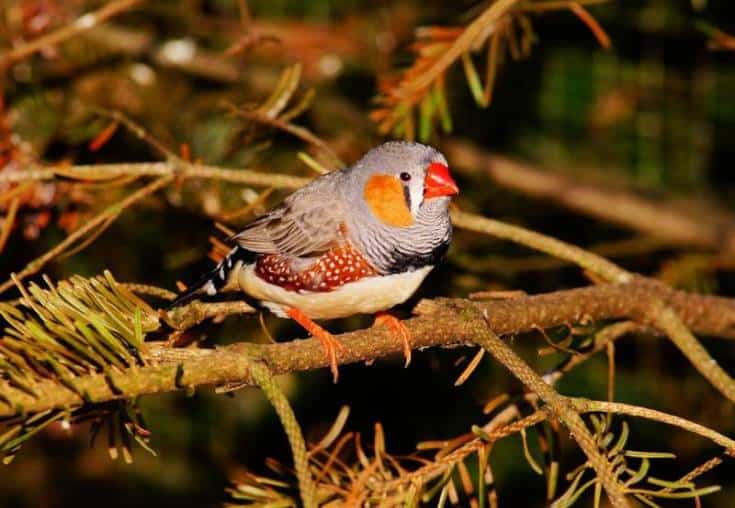
They should always be kept with an even number of occupants in a cage or aviary. One male and one female are recommended because males do not like spending time with males and females do not like spending time with other females.
They mate for life. Keeping a pair together also means the birds will not need an intense relationship with humans. They are not bred to be human companion birds. They will shy away from physical contact with humans. They are bred for the love of these lovely finches and are great for beginner breeders.
You can’t go wrong breeding with zebra finches.
Breeding pair cost:
You can expect to pay $20 to $75 per bird. Therefore, your breeding pair will cost $40 to $150.
Eggs are laid at a time and incubation period:
The female finch will lay 2 to 6 eggs at a time. Incubation is 12 to 14 days.
Time to raise a baby to selling age:
The young can be separated from their parents when they are 6 weeks old.
Daily costs:
Zebra finches will need roughly 1 ½ to 2 level teaspoons of food per day. They should have a balanced diet of seeds, fresh fruit, and fresh vegetables.
Feeding a finch will cost roughly $0.20 per bird per day.
Area size requirements:
Zebra finches need to be in an aviary or cage that is at least 24 inches long by 18 inches wide by 18 inches high with a bar spacing of no more than 1 ¼ to 2 inches apart for 2 birds.
Foods they can eat:
Zebra finches eat a variety of seeds and pellets as well as fresh fruit and vegetables.
Foods they cannot eat:
It is not safe to give your bird the following:
- Eggplant (aubergine)
- Alcohol – be aware of fruit or vegetables that are spoiled
- Avocado
- Acorns
Needed supplies:
- A cage or aviary
- Nest
- Branches or ladders to climb – they love climbing
- Food bowl
- Water bowl
- A few toys
- Perches
- A cuttlebone
- Bath
- Vitamin supplement
- A variety of perches
- Paper to line the base of the cage
Selling price for the offspring
You can sell them for $20 to $75 each.
3. African Grey
African Grey parrots are one of the most popular parrots on the market.
They are easy to breed with and are known for their unique personality and their ability to mimic sounds or speech.
They are highly intelligent and mischievous, as Petra’s mom can attest:
I have an African Grey who is permanently yelling at the dogs to shut up whenever they bark. He burps, farts, sings songs, copies cellphone ringtones – all too well – and can sing up a storm. He is quite a character.
Some are super sweet – normally hand-raised birds – but some are just downright grumpy! I have noticed with my monster that he is extra sweet when he is locked up and wants to get out of his cage, but the second he gets out he turns into a rottweiler and goes for my toes.
They are very happy-go-lucky. They thrive on human interaction and are normally bought as one single pet. If I am out, I usually leave music playing on my laptop for him. If he did not get all the attention, he gets from everyone in my house, I would say it is cruel to have just one. They are definitely very social.
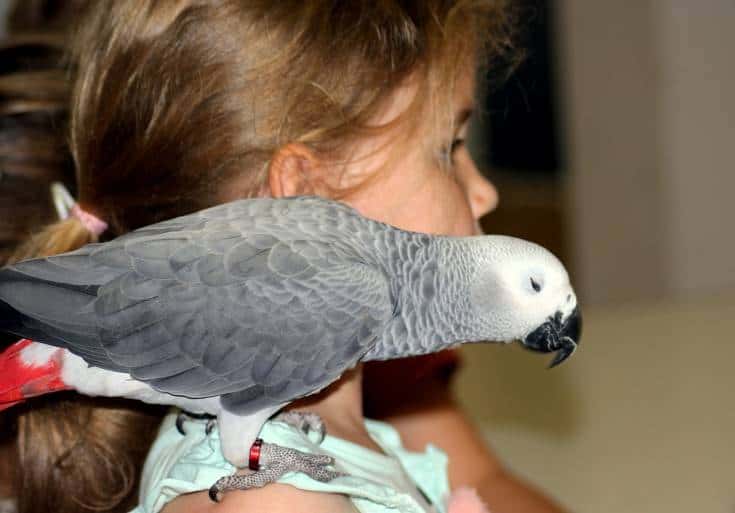
Breeding pair cost:
You can expect to pay $1000 to $1500 per bird.
Eggs are laid at a time and incubation period:
African Greys lay 4 to 8 eggs at a time. They only lay eggs 2 – 3 times per year. The incubation is 21 to 30 days.
Time to raise a baby to selling age:
You should never buy or sell a hand-reared African Grey before they are completely off of the hand feeding, roughly 12 weeks old.
Daily costs:
African Grey parrots eat 131 to 263 grams of food consisting of seeds, pellets, nuts, fresh fruit, and fresh vegetables per day.
This amounts to roughly $4 per bird per day.
Area size requirements:
African Greys are very large birds. Anything less than 24 inches long by 35 inches wide by 48 inches high for one bird will not suffice.
They are very active birds, and should not be locked in a cage all day and night. They need space to fly, run, play, and cause mischief. They are very destructive (as my books, shoes, cell phone, iPad… have found out). When you are not there to supervise and protect them, they definitely belong in a cage – for your home’s sake.
A good-sized aviary is a must if you are breeding.
As a breeder, you should inform buyers that they live +/- 80 years. They are a lifetime companion. It is wise to have a friend or family member spend time with the bird and build a relationship in case the worst should happen and the bird suddenly loses its caretaker.
We got our African grey from the family of an old man who died of emphysema. He coughed until he ran out of air (not really, he was just copying what he had heard). It took him a long time to settle in with us. I don’t blame the family for rehoming him as it must have been very painful for them to hear their father’s voice and the devastating last years of his illness.
Foods they can eat:
African Greys love a mix of seeds, pellets, nuts, fresh fruit, and fresh vegetables.
Foods they cannot eat:
- Avocado
- Chocolate
- Cocoa
- Alcohol
- Tapioca (cassava)
- Dairy products
- Meat
- Fruit pits and seeds
- Peanuts
Needed supplies:
- A very large aviary or cage
- Lots of perches and things to climb
- Things to chew on – wood blocks, uncooked corn on the cob, etc.
- Water bowl
- Food bowl
- Toys
- A vertical nest
- Shavings or paper for nest
- Perches
- Climbing branches
- Rope toys
- Chain toys
- Cardboard or paper to shred and chew on
- A cuttlebone
- Bath
- Mirrors
- Grooming spray bottle
- Vitamin supplement
- Swings
- An outside of the cage play area indoors where they can interact with you
- Feed toys like pellet and seed bells
- Wooden toys
- Paper to line the base of the cage
- Paper for the birds to rip up
- Chew toys
Selling price for the offspring
You can sell the offspring for $1000 to $1500 each.
4. Budgie (Budgerigar)
My very first bird was a budgie. At the time, I was just seven years old and I absolutely fell in love.
I could harp on about the birdsț characters, their social attitudes, their suitability as pets, etc., etc. but I think I will just let this lovely bird do all the talking:
Many people do not know that budgies are actually parakeets. There are two different sizes of budgies; English budgies grow to roughly 10 inches, weighing in at 1.6 to 2.2 ounces, while American budgies grow to roughly 7 inches, and weigh between 1.1 to 1.4 ounces.
There are very few differences between the two. They can live together without any problem. Knowing the size difference has a somewhat surprising, noticeable difference in personality.
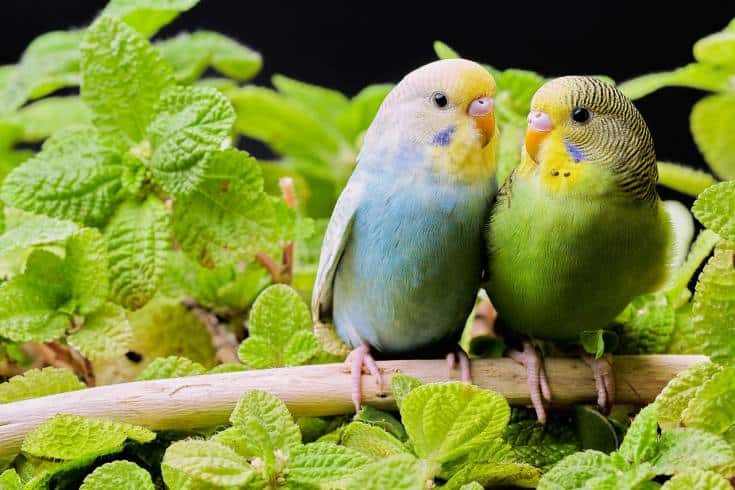
English budgies are every bit able to talk up a storm, but they are quieter-natured and do not move around much; but when kept with an American budgie you will quickly notice that American budgies are highly active, almost to the point of looking like they have ADHD. The other difference is that they are way louder than their big brothers and sisters.
Because of the whole ADHD thing, it is easier to train an English budgie because of its calm nature. They also speak softer than their American counterparts.
English budgies are fluffier, and more brightly colored than American budgies.
American budgies live 7 to 12 years, while the larger English budgie lives only 5 to 7 years.
Breeding pair cost:
Budgies cost $10 to $35 each. Therefore, your breeding pair will cost $20 to $70.
A helpful piece of information: budgies are really easy to sex. It will take a few weeks, but a male budgie’s nose (at the top of the beak) is blue, and the female is brown.
Eggs are laid at a time and incubation period:
Budgies generally lay 4 to 6 eggs at a time and incubation is 18 days.
Time to raise a baby to selling age:
Budgies can be removed from their parents and sold at 7 weeks old.
Daily costs:
Once you have lots of toys, I recommend buying 1 new toy per month. The food and toys should not cost you more than $50 per month.
This works out at roughly $1.60 per day.
Area size requirements:
American budgies need more space than English budgies because of their quieter nature. Both do need enough space to fly and exercise. They need some time out of their cages to exercise and interact with you.
Budgies are very loyal and develop a very strong bond with their caregivers if they are given the option of interacting with them outside of their cages.
Each bird needs a cage that is at least 20 inches long by 18 inches deep by 18 inches high.
Foods they can eat:
Budgies are all for variety. They love seeds and pellets, but they love fresh fruit and vegetables and even boiled eggs as well. In fact, hard-boiled eggs are an essential source of protein. Each bird should get 1 to 2 hard-boiled eggs per week with the shells. They will also eat whole grains, bread, and pasta.
Foods they cannot eat:
- Popcorn
- Chips
- Pretzels
- Salt
- Dairy products
- Chocolate
- Caffeine
- alcohol
Needed supplies:
- A cage
- A water bowl
- A food bowl
- A ladder
- A mirror
- And lots of toys (specifically toys that require a little mental stimulation)
- Budgies do not build nests, but for safety, it is better to give them a nesting box, if they do not have a nesting box, they will often lay their eggs in their food dishes
- Perches
- Rope toys
- Chain toys
- A cuttlebone
- Bath
- Grooming spray bottle
- Vitamin supplement
- Swings
- An outside of the cage play area indoors where they can interact with you
- Feed toys like pellet and seed bells
- Paper to line the base of the cage
Selling price for the offspring
Offspring can be sold for $10 to $35 each.
5. Quails
Quails were originally raised as food for humans. Today, they are still a part of the menu of many upmarket restaurants.
However, quails are really wonderful pets, and are popular in spite of the fact that they are classified as poultry.
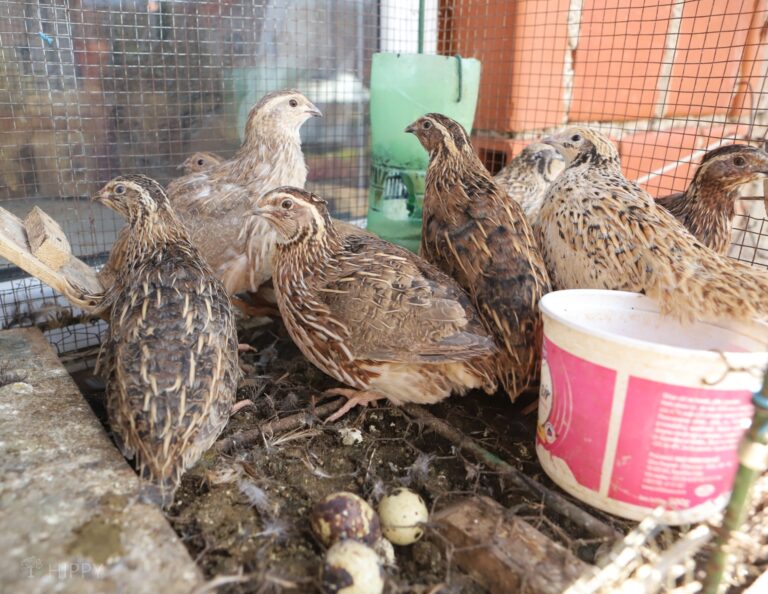
They are easily tamed. They will run to you when you get home from work making gentle, happy noises to greet you.
They will sit contentedly for hours at a time.
They are not really flight birds, instead, they love to climb and scratch about in dirt; they do need to be kept in a fully enclosed area to protect them from predators.
They are very social, and should always have a companion.
Breeding pair cost:
If you are going to breed quails, you should have 3 females for every male. Each quail will cost $1 to $5 depending on its age.
You should never introduce an older quail to an established group. They may fight for dominance. If you want to add quails, always introduce younger quails to the group.
Your breeding set will cost between $4 to $20.
Eggs are laid at a time and incubation period:
Quails only lay 1 – rarely 2 eggs in a day. They will add to the nest daily, eventually laying 9 to 10 eggs in a clutch. The eggs will begin to hatch after 17 to 18 days.
Quail eggs should be turned 4 to 5 times a day. For some reason, quails are not very good at turning their eggs and if the eggs are not turned the yolk will get stuck and result in a rotting egg that does not result in a chick.
Time to raise a baby to selling age:
Quails are very independent. You can sell the eggs, you can sell day-olds, juveniles, or adults.
Daily costs:
Quails are very inexpensive to raise. It will cost $0.04 to $0.09 per bird per day.
Area size requirements:
Quails are small birds; they only need 0.5 to 1 square foot per bird.
Foods they can eat:
Quails eat mainly grains and seeds, but they also enjoy plants, bugs, and worms.
Foods they cannot eat:
It is not safe to give your bird the following:
- Avocado
- Chocolate
- Caffeine
- Meat
- Rhubarb
- Salt
- Salty treats
- Grape seeds
- Citrus
- Parsley
- Leaves of tomato plants
- Raw potato
Needed supplies:
- A properly fenced-in habitat
- A quiet environment
- Piles of sand for them to dig and play in
- Branches to climb
- Water dishes
- Feeders
- Some toys to climb
- Vitamin supplement
- A variety of perches
- Quails do not need a nest, but they prefer a quiet dark place to nest
Selling price for the offspring
You can sell the offspring for $1 to $5 each.
6. Macaw
Macaws are the largest parrots on earth. Hyacinth macaws can grow up to 3 ½ feet long. With a wingspan of 60 inches.
Macaws are mind-blowingly beautiful parrots. They can have bright greens, yellows, reds, golds, and even white feathers that are starkly contrasted and unmistakable.
They are very chatty, mimicking sounds and words and vocalizing loudly.
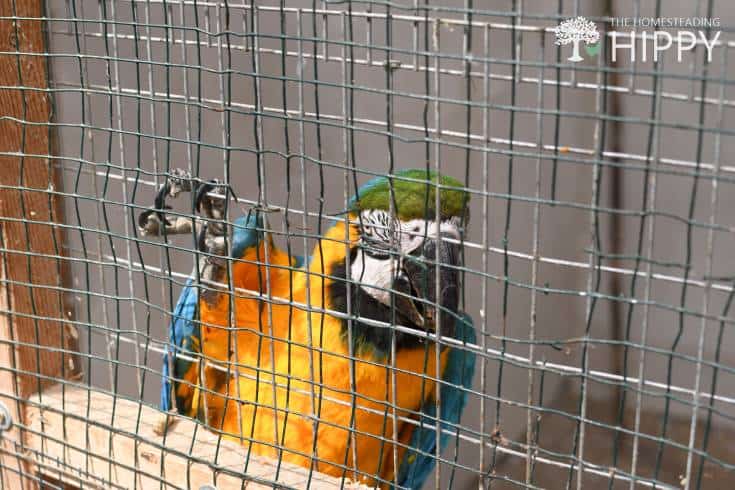
Most important to know is that they get bored, VERY easily! They can be very destructive if they feel lonely or that you are just not paying them enough attention. They need a lot of care and attention and should not be left alone for very long.
Once you have established a relationship with your macaw, you will find they are loving, affectionate, playful, and have a lovely personality.
Macaw parrots can be hard to breed if you only have one pair and they do not take to each other well. However, if you have a good setup with good pairs, breeding can be an easy, and lucrative income.
As a breeder, you should make sure buyers know that macaws live for +/- 60 years. They are a lifetime commitment.
Breeding pair cost:
Your breeding pair of choice will affect your initial output in purchasing a breeding pair, and it will impact your income.
- Blue and gold macaws cost $1200 to $1500 each. A breeding pair will cost $2400 to $3000.
- Hybrid macaws cost $1000 to $5000 each. A breeding pair will cost $2000 to $10000.
- Scarlet macaws cost $2000 to $3000 each. A breeding pair will cost $4000 to $6000.
- Smaller macaws sell for $700 to $1000 each. A breeding pair will cost $1400 to $2000.
Eggs are laid at a time and incubation period:
Macaws lay 2 to 3 eggs at a time. The eggs hatch 24 to 28 days after being laid. They breed once every 1 to 2 years. If you want a regular income, you will need more than one breeding pair.
Time to raise a baby to selling age:
The young ones can be separated from their parents at 3 months old.
Daily costs:
Macaws can be very expensive. You should set aside $200 to $300 every month for future vet bills. Trips to the vet can cost $100 – $2000 depending on if it is a checkup or a medical emergency. If they are admitted, they will also have a boarding cost.
Because they require a variety of pellets, seeds, and fresh fruit and vegetables their food bill will be roughly $50 to $70 per bird per month.
They will also need new toys every month because they are destructive. I want to emphasize that they are destructive because of their intelligence and therefore need constant stimulation. Destroying toys is very stimulating for them.
The daily cost will be roughly $4 per bird per day.
Area size requirements:
Please note that this is an absolute minimum size cage for 1 bird! They also need space outside the cage to get proper exercise. As a breeder, you will need a much larger cage or aviary.
A small macaw will need a cage that is 34 inches wide by 24 inches deep by 36 inches tall. Large macaws need a cage that is at least 36 inches wide by 48 inches deep by 60 inches tall. The bar spacing should be ¾ inch to 1 inch for smaller macaws and 1 inch to 1 ½ inch for large macaws.
Foods they can eat:
Macaws like a very mixed diet. They should have mixed pellets and seeds, limited fresh fruit, fresh vegetables, and some human food too; like cooked grains (rice), oats, soaked and cooked legumes, nuts, and buckwheat.
Foods they cannot eat:
It is not safe to give your bird the following:
- Avocado
- Alcohol
- Salt
- Onions
- Fat
- Meat
- Caffeine
- Peanuts
- Fruit seeds and pits
- Chocolate or cocoa
- Xylitol
- Garlic
- Dairy products
- Tapioca (cassava)
- Peanuts
What you will need in terms of resources:
- A very large cage
- An outside of the cage play area indoors where they can interact with you
- Feed toys like pellet and seed bells
- Food bowl
- Water bowl
- Lots of toys
- Perches
- Climbing branches
- Rope toys
- Chain toys
- Cardboard or paper to shred and chew on
- A cuttlebone
- Grooming spray bottle
- Vitamin supplement
- Swings
- An extra-large nesting box
- A safe space to play outside their cages – many people dedicate a spare bedroom for their macaws
- A variety of perches
- Wooden toys
- Paper to line the base of the cage
- Paper for the birds to rip up
- Shavings or paper for nest
- Nest
- Shavings or shredding paper for in the nest
Selling price for the offspring
The selling price is the same as what you paid for your breeding pair.
- Blue and gold macaws cost $1200 to $1500 each.
- Hybrid macaws cost $1000 to $5000 each.
- Scarlet macaws cost $2000 to $3000 each.
- Smaller macaws sell for $700 to $1000 each.
7. Cockatiel
Cockatiels are very popular small parrots that are part of the cockatoo family. They are loving, sweet companions because of their gentle, affectionate nature.
They are very vocal and mimic sounds and words. They do not have the vocabulary of their larger family members. They copy simple sentences and copy one or two sentences of a song.
They bond very closely with their caretakers. They recognize different sentences and are very affectionate.
They are great first birds to teach young kids responsibility for caring for the bird by feeding, giving water, and interacting with the bird; all of which should be done under adult supervision.
They love playing games, playing with toys, and interacting with people. They are very easy to tame and easy to maintain.
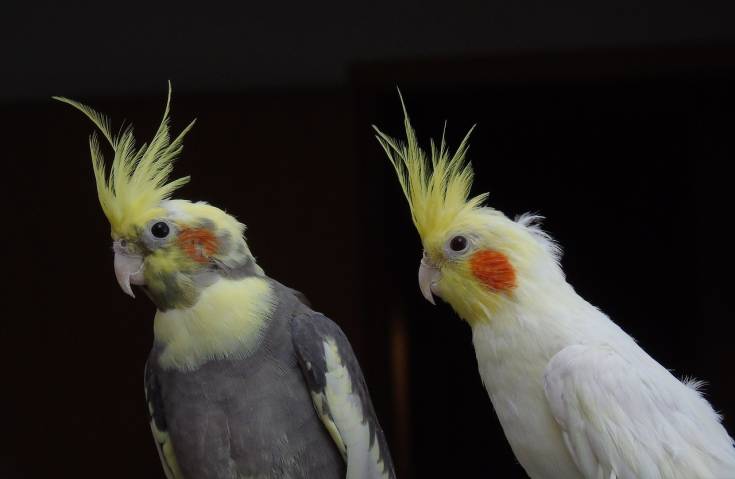
They do not need as much space as a large parrot. But they should be given time outside of their cages, under supervision, and in a protected area where cats and dogs cannot injure them.
Breeding pair cost:
A single cockatiel will cost between $80 to $250, with an average cost of $150 per bird.
The cost of your breeding pair will be roughly $300 to $500.
Eggs are laid at a time and incubation period:
Clutches of eggs are laid 1 to 2 times a year. A clutch consists of roughly 6 eggs. Incubation is 18 days.
Time to raise a baby to selling age:
If you intend to hand-feed the babies, you can start doing so when the chicks are 2 to 3 weeks old.
Ideally, the babies should stay with their parents until they are 8 to 10 weeks when they are fully weaned from their parents. At this point, they can be removed from their parents and sold.
Daily costs:
The start-up cost including the cage and toys can amount to roughly $300.
On a monthly basis, cockatiels can cost between $250 to $300 per bird for food and toys.
The daily cost per bird will be roughly $8 to $10 per bird per month.
Area size requirements:
The absolute minimum cage size should be 24 inches long by 18 inches wide by 24 inches tall per bird with a bar space of 3 ¼ inches apart.
Foods they can eat:
Cockatiels also enjoy a variety of foods consisting of seeds, pellets, vegetables, and fruit. They should get fresh greens every second day.
They enjoy apples (the seeds must be removed because of the fact that they contain arsenic). They also love carrots, bananas, broccoli, oranges, peppers, corn on the cob, and green vegetables.
Foods they cannot eat:
It is not safe to give your bird the following:
- Avocado
- Chocolate
- Salt
- Caffeine
- All fruit seeds
- Garlic
- Alcohol
- Honey
- Onion
- Mushrooms
- Dried or uncooked beans
- High-fat food
- High sodium food
- High sugar food
- Rhubarb
Needed supplies:
- A large cage
- A safe space to play outside their cages
- A variety of perches
- Food bowl
- Water bowl
- Enrichment toys, like mirrors, and ladders
- Swings
- Wooden toys
- Paper to line the base of the cage
- Paper for the birds to rip up
- A cuttlebone
- A birdbath
- Mirrors
- Grooming spray bottle
- Vitamin supplement
- Seed bells
- A variety of perches
- Nesting box
Selling price for the offspring
The babies can be sold for $80 to $250 each.
8. Canary
The canaries are one of my favorite songbirds. They do not mimic sound or speak. Instead, they have remarkable birdsongs. It should be noted that it is mostly the male who sings.
They say dynamite comes in small packages. That could not be more true in any other bird than in the case of canaries. They can be very loud for something so little.
They have beautiful yellow, red, gold, white, orange, and also rarer blue coloring.

They prefer the company of other birds over a relationship with a human. Imagine it from the bird’s perspective… they are tiny, and humans are huge.
They are not cuddly, affectionate birds but they make up for that with their great singing voices and their pretty coloring. Their voices are what draw people to these pretty birds.
Breeding pair cost:
They cost $25 to $150 per bird. A pair will cost you roughly $300.
Eggs are laid at a time and incubation period:
They lay 2 to 6 eggs at a time. The eggs hatch within roughly 14 days. The female can hatch 3 clutches in a year.
Time to raise a baby to selling age:
The young need to be with their mothers from when they are hatched to roughly 28 days; they can then be safely removed from the parents to sell them.
Daily costs:
Each canary will need 1 to 2 flat teaspoons of seed per day per bird. You should provide more than one feed bowl to ensure all the birds in the cage have equal access to food.
This amounts to $3.24 per bird per day.
Area size requirements:
Optimally, the cage should be 24 by 24 inches. At the very least your cage should be 18 inches wide by 18 inches long by 24 inches deep per bird. They need space to fly for exercise.
Foods they can eat:
The canaries eat seeds, berries, fruit, and vegetation.
Foods they cannot eat:
It is not safe to give your bird the following:
- Avocado
- Chocolate
- Fat
- Fruit pits
- Onions
- Salt
- Xylitol
- Apple seeds
- Caffeine
- Garlic
Needed supplies:
You will need:
- A suitable cage
- A blanket to cover the cage at night
- Cage cleaning pads
- A birdbath
- Mirrors
- Food bowl
- Water bowl
- Cuttlebone
- Grooming spray bottle
- Vitamin supplement
- Perches
- Toys
- Seed bells
- Swings
- Bath
- Paper to line the base of the cage
- A nest
- Paper to tear up for inside the nest
Selling price for the offspring
You can sell the offspring for $25 to $150 each.
9. Parrotlets
Parrotlets are primarily one-person birds. They develop deep relationships with their caregivers, but also develop relationships with other people if they trust them.
Because of their social personality, parrotlets do better if they are in a group. They are monogamous, therefore, the larger the group the more likely the birds are to breed.
They are stocky and small-built. They create tight bonds within human families.
They are very intelligent and easily learn to do tricks and to speak.
Their lifespan is shorter than larger parrots; they live 15 to 20 years – which is still a significant lifespan in terms of commitment.
These birds are goofy and will do anything to get your attention. They are social and love to interact with humans.
They can mimic language and noises.
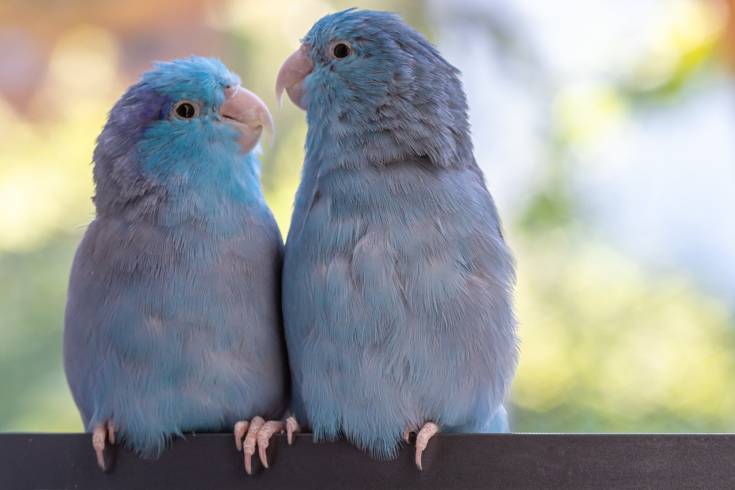
Breeding pair cost:
Parrotlets can be bought for $120 to $350 per bird. Your breeding pair will cost $240 to $700.
Eggs are laid at a time and incubation period:
Parrotlets usually lay 4 to 8 eggs, but there have been instances where the female laid 10 eggs. They can lay 3 to 4 clutches per year.
Parrotlet eggs take 18 to 19 days to hatch.
Time to raise a baby to selling age:
The best outcome is that the young are sold at 12 weeks, but many are sold at 6 weeks as soon as they are weaned.
Daily costs:
Food per month will cost in the region between $17 to $33 per bird per month. That amounts to $0.55 to $1.1 per bird per day.
Additionally, you should set aside a little a month for future vet visits. Parrotlets also require new toys every month. You should set aside $16 to $25 for toys each month.
Area size requirements:
Parrotlets need a cage that is 18 inches by 18 inches. The bar space should be no bigger than ½ inch to ⅝ of an inch.
Foods they can eat:
Parrotlets live off a mixed diet of pellets, seeds, fresh vegetables, legumes, grains, and fruit.
Foods they cannot eat:
It is not safe to give your bird the following:
- Avocado
- Chocolate
- Salt
- Caffeine
- Fruit pits
- Apple seeds
- Fat
- Garlic
- Onions
- Xylitol
Needed supplies:
- A cage or aviary
- Water dishes
- Food bowls
- Toys
- A cuttlebone
- Perches
- Some toys to climb
- Bath
- Climbing branches
- Rope toys
- Chain toys
- Cardboard or paper to shred and chew on
- Mirrors
- Grooming spray bottle
- Vitamin supplement
- Seed bells
- Swings
- An outside of the cage play area indoors where they can interact with you
- A safe space to play outside their cages
- Wooden toys
- Paper to line the base of the cage
- A nesting box
Selling price for the offspring
They can sell for $120 to $350 each.
10. Green-Cheeked Conures
Green-cheeked conures are delightful small parrots. They are great for beginners. They are intelligent birds who absolutely love their human caregivers.
They are affectionate and will even cuddle into their owners’ necks or cheeks.
They love learning and doing tricks and playing games with their caregivers. They are not loud and do not like rowdy noises, instead, they prefer trance-like, classical, or quiet music. They can learn a few words, but not as much as any of the other talking birds on this list.
They live for 30 years. They are not just affectionate towards one caregiver; they will happily interact with the whole family and even, to an extent, with visitors.
They get bored easily and therefore they need a lot of toys to play with.
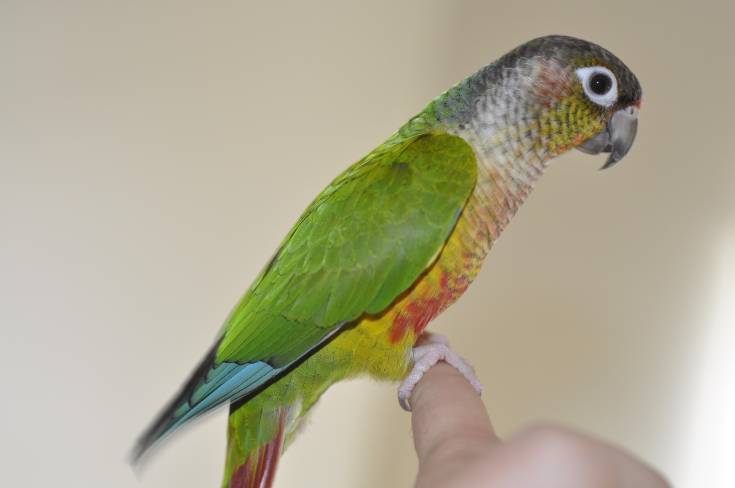
Breeding pair cost:
Green-cheeked conures cost between $250 to $500 each; however, pineapple, turquoise, and yellow-sided variations cost between $500 to $800 each.
Your breeding pair will cost $500 to $1600.
Eggs are laid at a time and incubation period:
Conures have babies 3 to 4 times a year. A clutch has 4 – 6 eggs. Incubation lasts for 22 to 25 days.
Time to raise a baby to selling age:
Green-cheeked conures are weaned between 8 to 10 weeks, at which point they can be removed from their parents and sold.
Daily costs:
Conures can be expensive to maintain. Veterinary care can cost anywhere from $100 to $1000. Monthly expenses for food and toys can cost $25 – $80 per bird per month.
This amounts to $0.88 to $2.66 per bird per day.
Area size requirements:
Because they are parrots, many people are tempted into buying a very large cage; however, you do not want a cage in which your birds get lost. The ideal space per bird is 24 inches wide by 24 inches deep by 24 inches tall.
Foods they can eat:
Green cheek conures enjoy a diet of pellets, fresh fruit, and vegetables like apples (with the seeds removed), beans, broccoli, peas, corn, carrots, bananas, dandelions, pears, kale, celery, lettuce, and spinach.
Foods they cannot eat:
It is not safe to give your bird the following:
- Lettuce
- Apple seeds
- Avocado
- Fruit seeds or pits
- Chocolate
- Alcohol
- Caffeine
- Fruit or vegetables that are off
Needed supplies:
You will need:
- A cage or aviary
- Food bowl
- Water bowl
- Toys
- Perches
- Climbing branches
- Rope toys
- Chain toys
- Cardboard or paper to shred and chew on
- A soft face cloth or small blanket inside the cage for them to sleep or snuggle under – they love to tuck themselves in for a snooze
- Mirrors
- Grooming spray bottle
- Vitamin supplement
- Seed bells
- A safe space to play outside their cages
- Wooden toys
- Paper to line the base of the cage
- A nesting box
Selling price for the offspring
They can be sold for $250 to $800 each.
Conclusion
Birds can take up a lot of time to breed or even to own. But they are so rewarding on a financial and emotional level.
It is always important to know your own limits as a breeder and owner of birds. Understanding their lifespan, nutritional needs, personalities, and potential for good and bad behavior can result in fewer grey hairs on your head.
I prefer not to sell to pet shops because often the type of person who purchases birds from a pet shop is not knowledgeable about breeds or the commitment in time and money that are needed to make an informed decision.
As a breeder, your responsibilities include:
- Breeding responsibly
- Ensuring the health of your birds and their offspring
- Educating the public whenever possible
- Providing the birds with food and water
- Providing appropriate, stimulating toys
- Carefully considering and educating potential buyers
- Ensuring that the buyer’s expectation of the birds matches with the reality of the bird’s actual abilities
- Keeping your birds in clean, hygienic cages
- Having spare cages on hand
- An incubator and brooder if you want to incubate the eggs yourself
Always ensure that your cages or aviaries are properly cleaned, and provide vitamins and minerals to supplement your bird’s health.
Follow these guidelines and you will be a successful breeder. When breeding and training with birds, what you put in is what you get out.
I have placed a short video with each bird to help you see what each bird looks like and to get a sense of their intelligence, playfulness, personality, and their need for stimulating toys. Once you have chosen the bird to breed, you should be knowledgeable about such things and be able to teach your buyers what the bird will need from them.
It does not hurt to get your own pet to do a demonstration when buyers come around.
Here is a final little something to motivate you to spend more time interacting with your fine feathered friends.
Your Top Questions Answered
The average person can make around $20 to $75 per bird, meaning a typical clutch can yield several hundred dollars, depending on the size. Full-time breeders can make even more!
If you’re going to start a bird breeding business, buying a few male and female budgies is the way to go. These are some of the most popular birds and are easy to raise in captivity.
At the most basic level, you’ll need breeding cages, incubators, food and water, and a good calcium supplement to breed birds part-time.
Besides pet birds, other animals that you can breed for profit include chickens, ducks, rats, pigs, rabbits, chameleons, and mice.
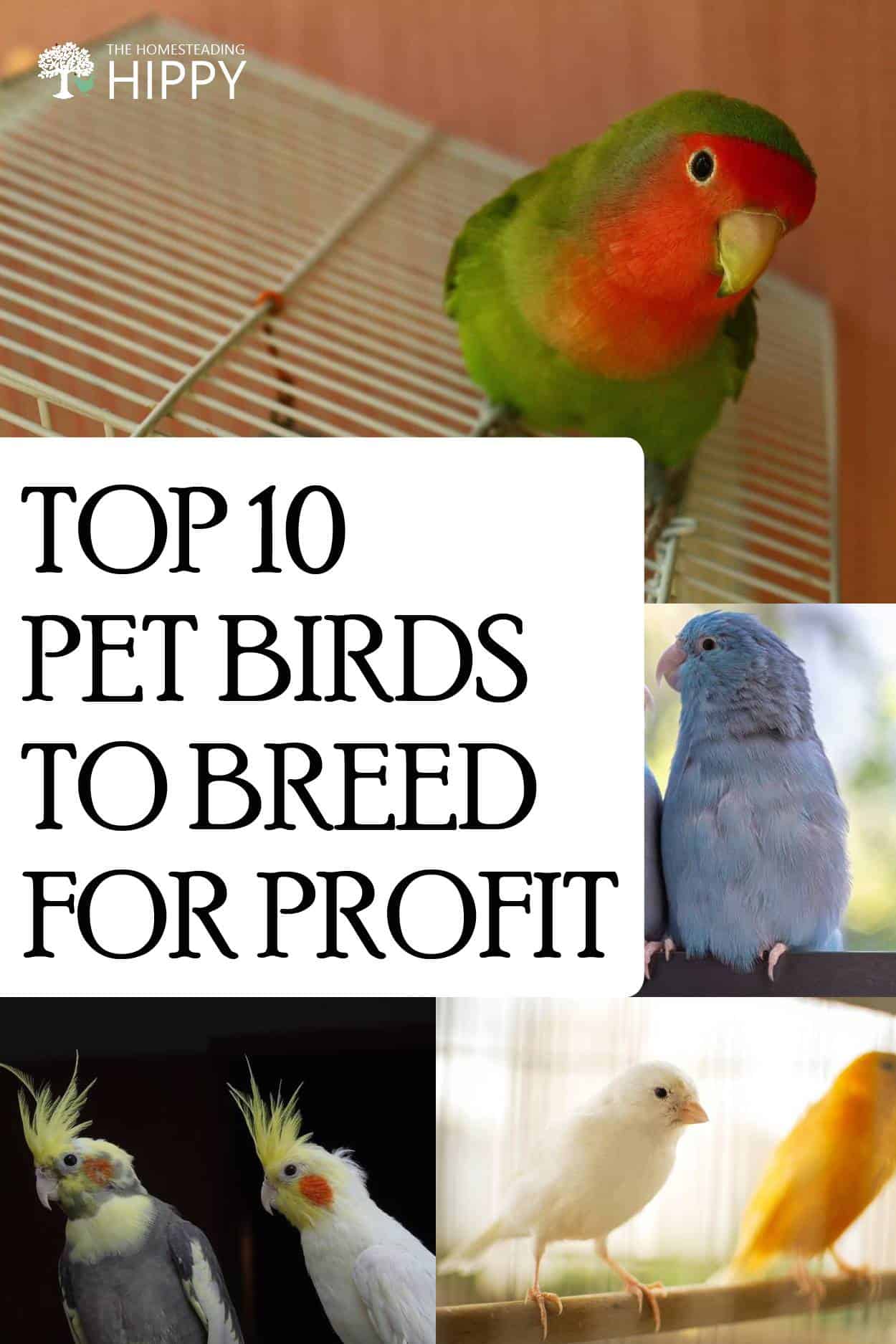
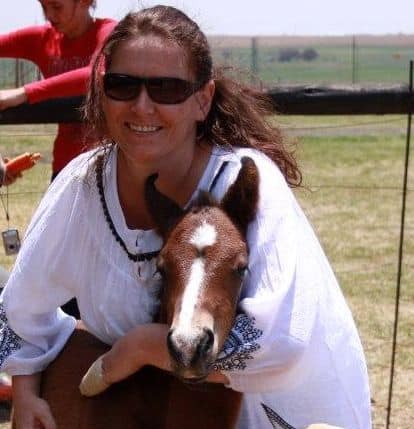
Di-Anne Devenish Seebregts was raised in an environment where daily life consisted of hiking, environmental conservation, growing fruit and vegetables, and raising poultry for meat and eggs.
She combined her passion for the writing word with her love of the pride that comes with not relying on others. She raised three children (who are now adults) to value the environment, and understand the value of being self-sufficient.
Find out more about Di-Anne on our About Us page.
